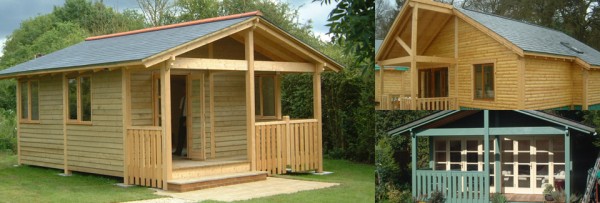
Typically, outbuildings are classed as anything from a shed, greenhouse and garage to sauna cabins and swimming pools, that are incidental to the enjoyment of the main dwelling. Outbuildings are typically considered to be permitted development, essentially meaning that no planning permission is needed when building on your own land.
What is Permitted Development?
Permitted development is building work that you can do to your home without needing planning permission. Incidental use can be loosely defined as things you don’t do in your main house. Hobbies are often viewed as incidental use, as are storage, gym and other occasional uses and even then, the garden building has to meet various constraints re size and position.
If your building has an “ancillary” use it may need planning permission. Ancillary uses are such things as sleeping, showering. I.E. Things that you can also do in your house.
Permitted development essentially allows home owners to construct an outbuilding in their back garden and sometimes side garden, too, covering up to half of the original garden area, providing it is:
- Less than four metres in height with a pitched roof
- Less than three metres high with a flat roof
- No taller than 2.5 metres at eaves height; and
- No closer than two metres to the boundary
However, if you are unsure as to whether you need planning permission for your project, visit the government planning portal, filled with useful information and advice regarding outbuildings. Whether or not planning permission is required, the building will need to comply with the Building Regulations.
Permitted development allows you to build incidental structures such as sheds and summerhouses without Planning Permission. Whether or not you need planning permission for an outbuilding depends on how you intend to use your building.
Planning permission for garden offices
An office used as an home study combined with other leisure uses may not need Planning Permission if it meets other permitted development criteria, such as height and size.
If you are running a business from a garden office eight hours a day, five days a week you may well need planning permission even if the building is less than 2.5m tall. If you only occasionally work in your garden office you may not need planning permission, but more about that after…
Planning permission for garden rooms
A garden office used for occasional or ‘incidental’ leisure use such as a studio or gym that meets permitted development requirements shouldn’t need Planning Permission. But, it’s vital to double check with your planning department and we will do this for you.
Planning permission for granny annexes
You’ll always and without exception need Planning Permission. If a garden building is going to be slept in, it needs planning permission.
The grounds for permitted development are often varied, as what one local authority may class as permitted development, another council may not. However, it is always important to check with local authorities when planning to build any form of outbuilding due to changes in laws and planning regulations.
This article is written by Becky Nesbit with helpful information from Paragon Oak














